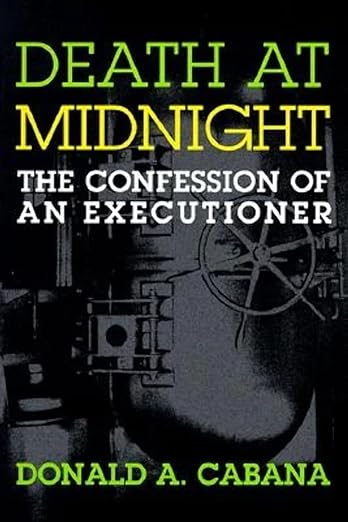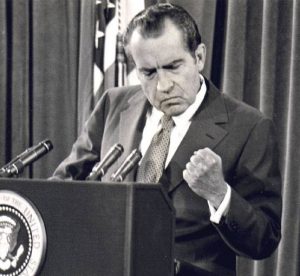Am I Wrong?!
 So, y’all know I can’t just go get on a plane and have a simple trip, right? Well, this flight to Dallas was under-booked. So, basically everyone sat on the aisle or windows, and we weren’t crammed in like sardines.
So, y’all know I can’t just go get on a plane and have a simple trip, right? Well, this flight to Dallas was under-booked. So, basically everyone sat on the aisle or windows, and we weren’t crammed in like sardines.
The lady at the window was nice. We chatted for a second. She asked where I was from and when I said “New Orleans”, so a Yat [native New Orleanian] behind me starts chatting and being a Yat. Fine. Whatever. The plane taxis to the runway, and as we are barreling down [it], someone’s cat starts howling. HOWLING. Well, I got tickled and started laughing. No one else found this funny, including the cat’s owner. Which….just made me laugh harder.
This cat was pissed. And scared. I looked at the lady next to me and said, “if he lets that cat out, it’s going to be nothing but a******s and elbows for the immediate future!” She starts laughing, and so now we’re both cackling to this cat howling as we reach about 10k feet.
The cats’ owner…he was not joining in the fun.
The cat finally settles down….but then we start descending [amidst what] was probably the worst turbulence I’ve experienced. Apparently, the cat didn’t like it any more than I did and started back up again. But this time, you could hear it running around, panicked in its crate.
 Yep. That was funny too. And then….the cat takes a big ole nasty s**! So, the last thirty minutes I’m in a plane ALL over the sky and the plane reeks of cat s**t.
Yep. That was funny too. And then….the cat takes a big ole nasty s**! So, the last thirty minutes I’m in a plane ALL over the sky and the plane reeks of cat s**t.
The dude (the owner of the cat) glared at me as he disembarked.
I said, “Please, tell me you’re going to New Orleans in two hours.“ No response.
I may drive the rest of the way.
Read MoreSnapshot: If You Want a Green POTUS, Nixon’s The One

One can argue that Richard Nixon’s environmental legacy stands out as his most notable achievement, particularly when compared to the more scandalous aspects of his presidency. Established in 1970, the Environmental Protection Agency (EPA) became a cornerstone of Nixon’s environmental policy. By consolidating multiple federal programs under one roof, it ensured a more coordinated and effective approach to environmental protection. This was akin to Roosevelt’s establishment of national parks, aimed at safeguarding the country’s natural beauty.
The Clean Air Act of 1970, another hallmark of Nixon’s tenure, set out to curb air pollution through stricter regulations. It required the EPA to set National Ambient Air Quality Standards, drastically improving air quality across the nation. This Act was essential in addressing the adverse health impacts of air pollution and has been hailed as a model for subsequent environmental legislation globally.
Nixon didn’t stop at air; his administration also targeted water pollution. The Clean Water Act of 1972 empowered the EPA to regulate the discharge of pollutants into U.S. waters, aiming to achieve “fishable and swimmable” waters. Prior to this, many rivers and lakes were heavily polluted, but this Act laid the groundwork for substantial improvements in water quality.
His administration also initiated the Endangered Species Act of 1973, providing critical protection for species at risk of extinction. This Act was a significant step forward in conservation, building upon the foundations laid by Roosevelt’s work in establishing national parks and protecting wildlife.
 Nixon’s tenure also saw the passage of the National Environmental Policy Act (NEPA) of 1969, which mandated that all federal agencies consider the environmental impact of their actions and projects. This law introduced the requirement for Environmental Impact Statements, ensuring that environmental considerations became a central part of government decision-making.
Nixon’s tenure also saw the passage of the National Environmental Policy Act (NEPA) of 1969, which mandated that all federal agencies consider the environmental impact of their actions and projects. This law introduced the requirement for Environmental Impact Statements, ensuring that environmental considerations became a central part of government decision-making.
Compared to Roosevelt, Nixon’s efforts were more focused on regulatory measures to address the industrial pollution and environmental degradation that had become prevalent by the late 20th century. Roosevelt’s contributions were groundbreaking for their time, focusing on conservation and the establishment of protected areas. However, Nixon’s approach tackled the complex environmental challenges of his era, laying the groundwork for the modern environmental movement.
Nixon’s environmental policies were driven by a growing public awareness of environmental issues, spurred by events like the publication of Rachel Carson’s “Silent Spring” in 1962 and the first Earth Day in 1970. These events highlighted the need for comprehensive federal action, and Nixon’s administration responded by enacting a series of landmark environmental laws.
While Nixon’s presidency is often remembered for its controversies, his environmental achievements have had a lasting impact, shaping the framework of modern environmental policy. His administration’s actions underscored the importance of federal leadership in addressing environmental challenges and demonstrated that significant progress could be made through bipartisan cooperation and public support.
Read MoreReview: “Death At Midnight (The Confession of an Executioner)”
 Death at Midnight: The Confession of an Executioner written by Donald A. Cabana with its bright green title and the front-and-center image of a gas chamber is not a book that can be easily misjudged by the cover; it is unflinching, somber, and agonizingly, brutally, honest and thought-provoking.
Death at Midnight: The Confession of an Executioner written by Donald A. Cabana with its bright green title and the front-and-center image of a gas chamber is not a book that can be easily misjudged by the cover; it is unflinching, somber, and agonizingly, brutally, honest and thought-provoking.
Dr. Cabana’s use of descriptive language would (and did) make creative writers weep in envy of his visceral images crafted through deceptively complex sentences. With just a few words and little effort on the part of the imagination of the reader, Dr. Cabana paints pictures of the reality of execution that most people would prefer to forget; the people being executed are still human beings with thoughts, hopes, fears, and desires.
Trying to summarize this book does it no justice. The book begins at the end for an inmate by the name of Connie Ray Evans, a death row inmate who was sentenced to execution for the murder of a gas station clerk during a robbery. It’s a rather fitting beginning since there’s no way to ease into a topic like this, it’s an all-in, all-at-once, in-your-face issue. No amount of preparation or philosophical discussion can prepare you for the reality of the death penalty, just as no amount of testing can prepare one for the reality of the execution via gas chamber. Dr. Cabana’s horror over the reality of execution, made worse by the fact that he himself liked Connie Ray Evans as a person, is easily felt in the first chapter. It only gets heavier from there as more context is provided in the following chapters.
While the book brings in information about the legality of the death penalty, never once does it feel like the clinical, somewhat distanced philosophical approach one would expect of a lecture or lesson from a Criminal Justice teacher. Given that Dr. Cabana is more invested in the human aspect of the situation, this comes as no surprise, but is, instead, refreshingly raw. Nothing about this book is clinical or distanced. Dr. Cabana was faced with the reality of the death penalty and the personhood of those caught under the weight of such a practice and makes sure everyone who reads his book is faced with it as well. Death at Midnight makes the reader confront the reality that when discussing the death penalty, people like to forget that the people being put to death are, like all humans, complex and nuanced beings; they are infinitely more than the crimes they have committed, whether society wants to acknowledge that or not. As Dr. Cabana puts it:
Executions strip away the veneer of life for both warden and prisoner. Connie Ray Evans and I transcended our environment, and the roles in which they had been cast. The two of us had somehow managed to become real people to each other. There were no more titles or social barriers behind which either of us could hide—I was no longer a prison warden and he had become someone other than a condemned prisoner. We were just two ordinary human beings caught up in a vortex of events that neither of us could control. (16)
Never once does Dr. Cabana let us forget that these are people, regardless of their circumstances. Even when faced with the death of a staff member of the prison by an inmate, Dr. Cabana still treats the man with compassion despite his own anger.
When I first started this book, I was not prepared for it. I could tell from the cover this was going to be a book that would emotionally impact me, but I still wasn’t prepared for how much. There were several times I had to put the book down and walk away from it because I was so overwhelmed by the raw brutality of the words. I knew I was getting into something heavy, but I still wasn’t prepared. There is no way to read this book and maintain emotional distance because this isn’t fiction. This isn’t The Green Mile where you can remind yourself that it’s just a story; this is a confession, plain and simple. Dr. Cabana declaring “you are my friend, Connie . . . I won’t forget you” (187) moments before being the one to order the lever drop on the gas chamber is heartbreaking and without doubt one of the most emotionally devastating things I have ever read.
Everyone should read this book, even if for no other reason than to remember that we are all flawed but nuanced creatures with infinitely more to each of us than a single moment of our legacies, and these nuances deserve to be explored.
Read More